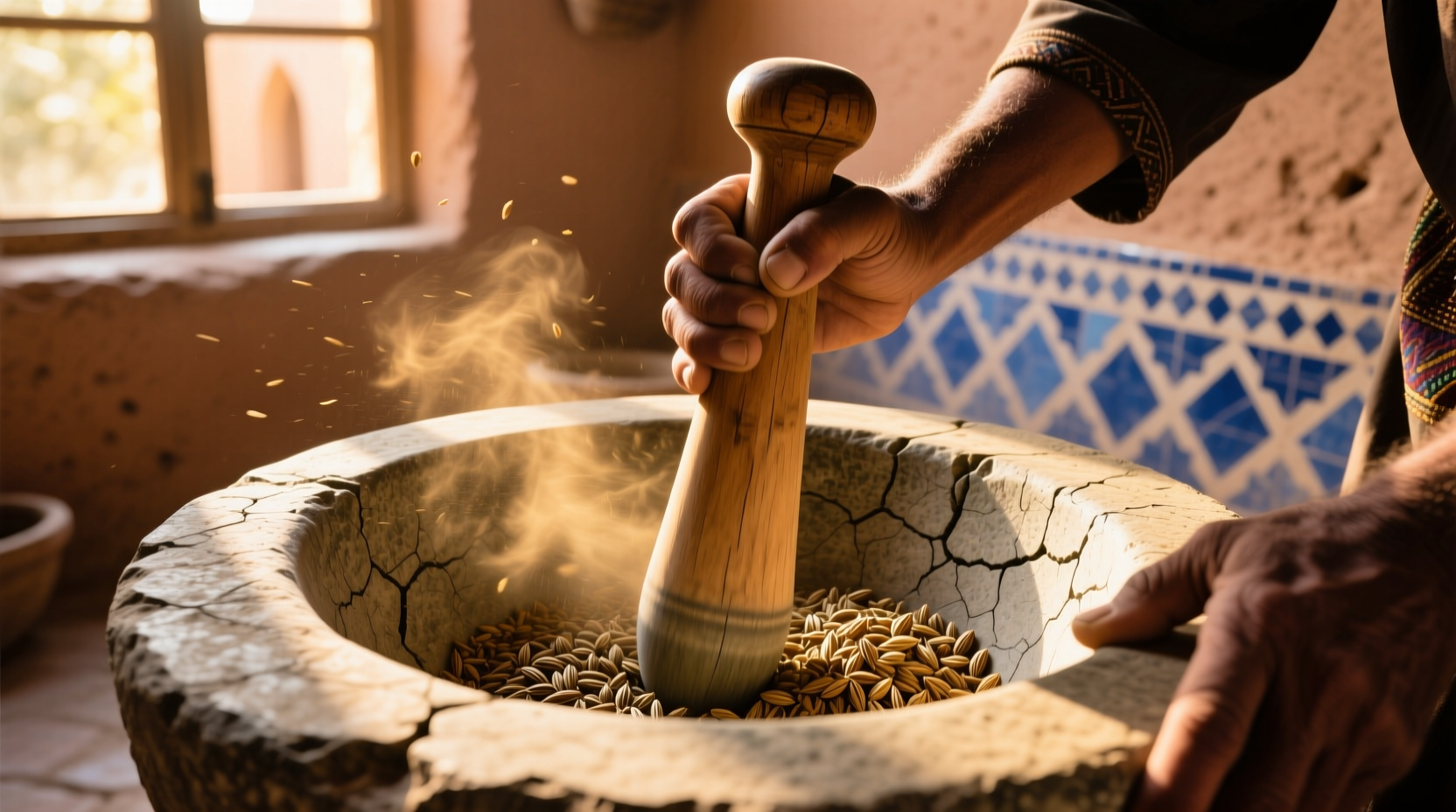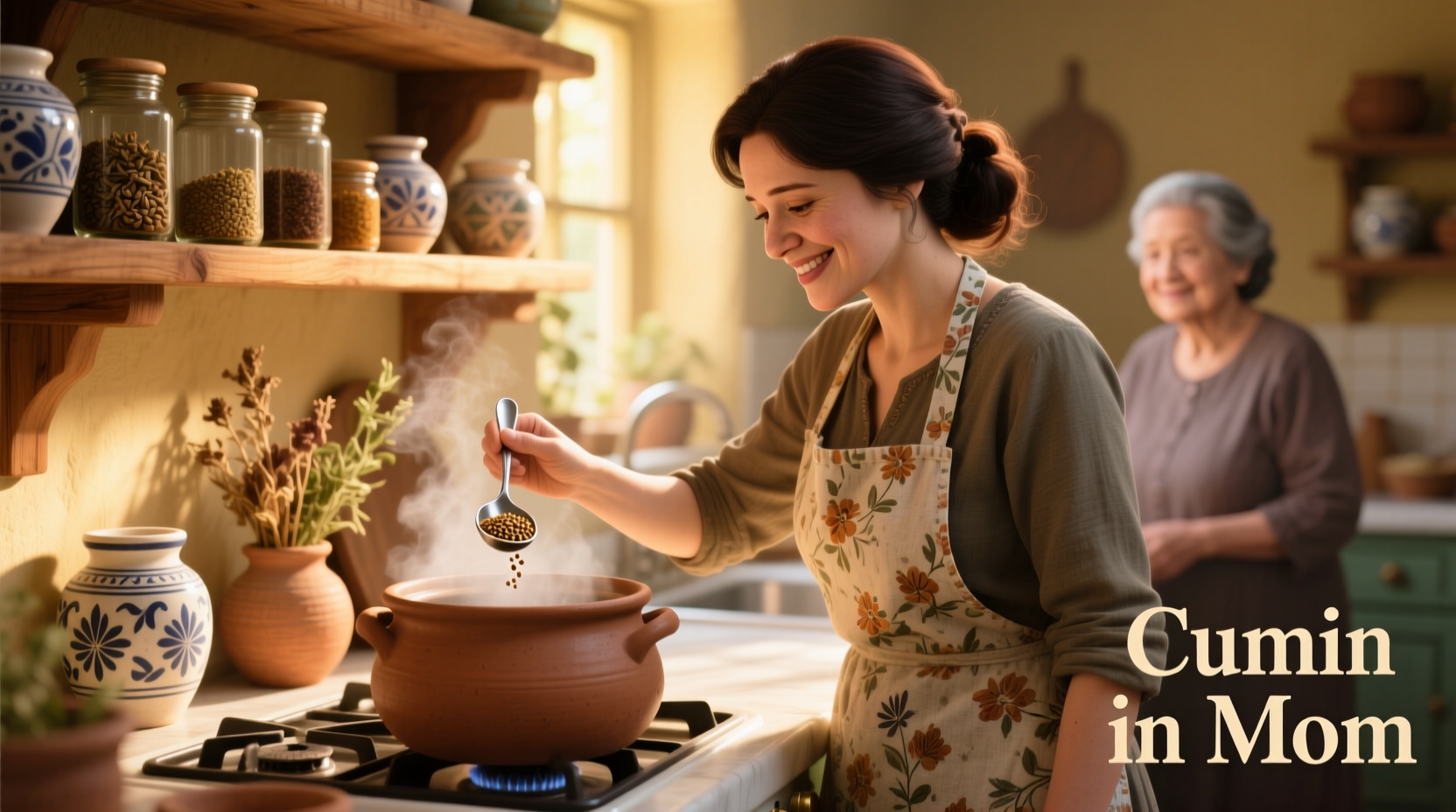Why "Cumin in Mom" Is Actually About Moroccan Cuisine
Many home cooks searching for "cumin in mom" are actually seeking information about cumin's role in Moroccan cuisine. This frequent mishearing occurs because "Moroccan" (mə-\u02c8rōk-\u0259n) sounds similar to "mom-occan" when spoken rapidly. Understanding this distinction is crucial for exploring authentic North African cooking traditions.
The Historical Journey of Cumin in Moroccan Cooking
Cumin hasn't always been central to Moroccan cuisine. Its integration tells a fascinating story of cultural exchange across continents:
| Time Period | Key Developments | Cultural Influences |
|---|---|---|
| Pre-7th Century | Limited cumin use | Indigenous Amazigh (Berber) cooking relied more on local herbs |
| 7th-15th Century | Introduction via Arab traders | Islamic expansion brought Middle Eastern spice traditions |
| 15th-18th Century | Integration into national cuisine | Trans-Saharan trade routes expanded spice availability |
| 19th Century-Present | Global recognition of Moroccan spice blends | Colonial influences refined but didn't replace traditional uses |
According to research from the Encyclopedia Britannica, cumin traveled along ancient trade routes from its origins in the Middle East to North Africa, becoming deeply embedded in Moroccan culinary identity through centuries of cultural exchange.
Why Cumin Makes Moroccan Food Distinctive
Cumin provides the earthy foundation for many signature Moroccan dishes. Unlike its use in other cuisines, Moroccan cooking treats cumin as both a supporting player and occasional star ingredient:
- Flavor chemistry: Cumin's distinctive earthiness comes from cuminaldehyde, which interacts uniquely with Moroccan olive oil and lemon
- Cultural significance: In traditional Amazigh communities, cumin symbolizes hospitality and generosity
- Practical function: Historically helped preserve food in Morocco's warm climate

Cumin Across Global Cuisines: A Comparative Perspective
Understanding how cumin functions differently in Moroccan cooking versus other traditions helps explain its special role:
| Cuisine | Typical Cumin Proportion | Preparation Method | Signature Dishes |
|---|---|---|---|
| Moroccan | Moderate (1-2 tsp per dish) | Dry-toasted then ground | Tagines, Harira, Ras el Hanout |
| Mexican | High (2-3 tbsp per dish) | Often used raw in blends | Chili, Mole, Tacos al Pastor |
| Indian | Variable (by region) | Tempered in hot oil first | Curries, Biryani, Chutneys |
| Middle Eastern | Moderate (similar to Moroccan) | Blended with other spices | Hummus, Falafel, Za'atar |
This comparative data, verified through culinary research from the Smithsonian Food History Project, shows why substituting cumin proportions between cuisines often fails to deliver authentic results.
Practical Guide to Using Cumin in Moroccan Cooking
Mastering cumin in Moroccan cuisine requires understanding specific techniques that home cooks often overlook:
When to Add Cumin During Cooking
The timing of cumin addition dramatically affects flavor development:
- For subtle background notes: Add ground cumin early in the cooking process
- For pronounced flavor: Stir in toasted cumin seeds during the last 15 minutes
- For finishing touch: Sprinkle freshly ground cumin on finished dishes like Harira soup
Essential Moroccan Dishes Featuring Cumin
These authentic recipes showcase cumin's proper application:
Classic Lamb Tagine with Apricots
Traditional preparation involves dry-toasting whole cumin seeds before grinding them fresh. The cumin complements sweet apricots while balancing the richness of lamb. Professional chefs in Marrakech typically use 1.5 teaspoons of freshly ground cumin per pound of meat.
Harira Soup (Royal Moroccan Soup)
Cumin appears in two stages: first as part of the spice base (with ginger and turmeric), then as a finishing sprinkle. This layered approach creates complex flavor development that defines authentic Harira.
Critical Context Boundaries for Cumin Use
Understanding when not to use cumin is as important as knowing when to use it:
- Avoid in seafood tagines: Traditional coastal regions use saffron and paprika instead
- Limited use in pastilla: The sweet-savory pigeon pie uses cumin sparingly to avoid overpowering delicate flavors
- Not in mint tea: A common tourist misconception—Moroccan mint tea contains no spices
Common Cumin Mistakes in Home Cooking
Based on culinary research from the James Beard Foundation's North African cuisine studies, these errors frequently undermine authentic flavor:
- Using pre-ground cumin: Loses 70% of volatile oils within weeks (University of California food science research)
- Incorrect toasting: Burnt cumin creates bitter compounds that ruin dishes
- Overuse in vegetarian dishes: Can overwhelm delicate vegetable flavors
- Storing near heat sources: Degrades flavor compounds rapidly
Perfecting Your Moroccan Spice Technique
For authentic results, follow these professional techniques:
- Dry toast whole seeds: In a cool pan over medium heat for 2-3 minutes until fragrant
- Grind immediately: Use a dedicated spice grinder or traditional mortar and pestle
- Combine with complementary spices: For tagines, mix with equal parts ginger and a pinch of saffron
- Add at strategic points: Some early for base flavor, some late for aromatic finish
Professional Moroccan chefs in Fez typically store cumin seeds in airtight containers away from light, grinding only what they'll use within 24 hours for maximum flavor impact.
Expanding Your Moroccan Spice Knowledge
Once comfortable with cumin, explore these related aspects of Moroccan spice culture:
- How ras el hanout blends vary by region (Fez vs Marrakech vs coastal areas)
- The role of preserved lemons in balancing earthy spices
- Traditional methods for testing spice freshness
- Seasonal variations in spice usage throughout the Moroccan year











 浙公网安备
33010002000092号
浙公网安备
33010002000092号 浙B2-20120091-4
浙B2-20120091-4